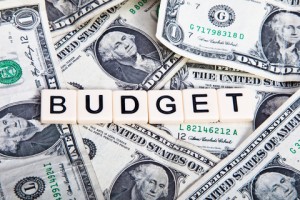 Preparing a budget is a lot like preparing a weather forecast. Using the data you have about historic patterns and information about present conditions you try to predict what will happen in the future.
Preparing a budget is a lot like preparing a weather forecast. Using the data you have about historic patterns and information about present conditions you try to predict what will happen in the future.
Budgeting is essentially a review of financial information from the past to predict the future performance of your business and manage business resources accordingly. When newbie business owners finish their business plan, they have, in effect created their first budget, using what they believe business conditions to be to predict the revenues and expenses of their business. Once the business has been established and running for a year, business owners enter their second year with a little more realistic view of how much they can expect to earn and spend in the course of their business, and can adjust costs and prices accordingly.
In the very early stages of your business, you’ll likely want to keep your budget simple. As your business progresses, and as you become more financially and technically savvy, you can prepare more detailed budgets.
In the beginning, there are a few basic concepts you must understand:
Variable costs – These are costs that fluctuate based on your sales. For example, if you’re running a pizza business, the more pizza you sell, the more your costs for cheese, crusts, etc. goes up. Fewer sales means lower variable costs.
Fixed costs – These are costs that don’t fluctuate based on sales, such as insurance, rent, payroll, etc.
Break-even point – This is the point where your sales allow you to break-even with your costs. Finding this point is important in figuring out the pricing point for your products or services.
Gross profit – This is your total sales, minus the cost of producing your product or service. It doesn’t include the cost of taxes, payroll or interest payments.
Net profit – This is your profit after subtracting taxes, payroll and/or interest payments. Most simply, this is the money you have leftover after paying for all your business related expenses.
By understanding these basic terms, you’ll be able to generate a budget that shows your estimated costs of doing business, the price you need to charge to break even and make a profit, and how much you can expect to earn from operating your business.
For budget beginners, here’s a simple worksheet you can use as a template as you prepare your budget.
Total Revenue
Sales Revenue
Interest Income
Investment Income
———————————————————————————————————–
Expenses
Accounting
Payroll
Legal expenses
Vehicle expenses
Interest on debt
Supplies
———————————————————————————————————–
Total revenues
Total expenses
Gross profit
Net profit
While there are any number of additional expenses you could tack on to the report, this gives you a basic template you can start from.
Additional tips
Here’s a few budgeting tips for small business owners:
Get the software. If you’re doing your budget on your own, invest in some software. Microsoft’s Excel is an easy to use and reliable tool and is used by both mom-and-pop stores and Fortune 500 companies. Also, most accounting software packages have an application you can use for budgeting. The great thing is that most of these applications have tutorials that will help guide you through the budgeting process.
Look around. Small business owners should do a thorough review of their industry and speak with business owners in similar fields to determine what budget conditions are like for them. You can also take a look at the IRS website to help you see what portion of your revenue will likely have to be budgeted to cover cost groupings. You probably won’t get an exact template for your business from this research, but you will get a general direction that your budget needs to take.
Learn to love spreadsheets. If you don’t already use spreadsheets, learn how and use them to estimate how much of your revenue will need to be used to cover your supplies, labor, rent and other costs. Spreadsheets are an excellent visual tool that can give you immediate access to the information you need to successfully monitor and forecast budgets.
Design your budgets with a cushion for adversity. Don’t expect your business to follow the budget you create down to the last penny. Leave yourself some leeway for cost overruns and unanticipated events. This is particularly important if you’re expanding your business or hiring more help, as unforeseen costs from these activities can and do often arise.
By designing your budget with a cushion, you can ensure that you’ll have a soft landing should adversity alter your plans.
Be on the lookout for cost cuts. Constantly be looking for opportunities to reduce costs. Even if you don’t immediately take advantage of them, in the event that you need to drastically reduce costs, you’ll have some immediate ideas of where to cut.
Other cost-lowering maneuvers include delaying purchases until a new billing cycle begins and to carefully examine payment terms your creditors and suppliers offer to find the plan that’s best for you.
Also, be on the lookout for tax advantages that make purchases or deferring purchases advantageous. Keeping in touch with your financial advisor about these potential moves throughout the year is recommended.
Revisit the budget a few times per year. Just as weather forecasters periodically update their weather forecasts as new information becomes available, so must business owners revise their budgets as business conditions change. It’s important to keep a close watch on income and expenses and adjust accordingly when the figures skew far from your estimates, it’s time to sit down and run the numbers again.
There are many variables that can change in the course of a fiscal year, making it neccessary to revise your projections. For example, in recent years the cost of gasoline has varied greatly, and businesses involved in transporation are highly impacted by changes in this cost. A big shift in the price of gasoline could lead a transportation-related business, such as a delivery service or cab company, to need to revise its budget to account for increased costs or to find a productive use for savings created by sinking prices.
Mastering the budgeting process can be a valuable tool in helping you quickly assess your business’ profitablity and the actions you need to take to reduce costs or increase revenue to keep it in the black.










